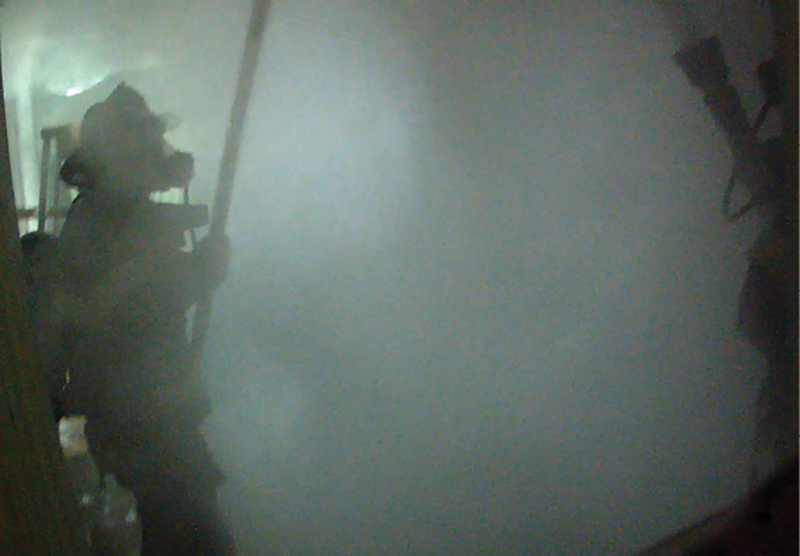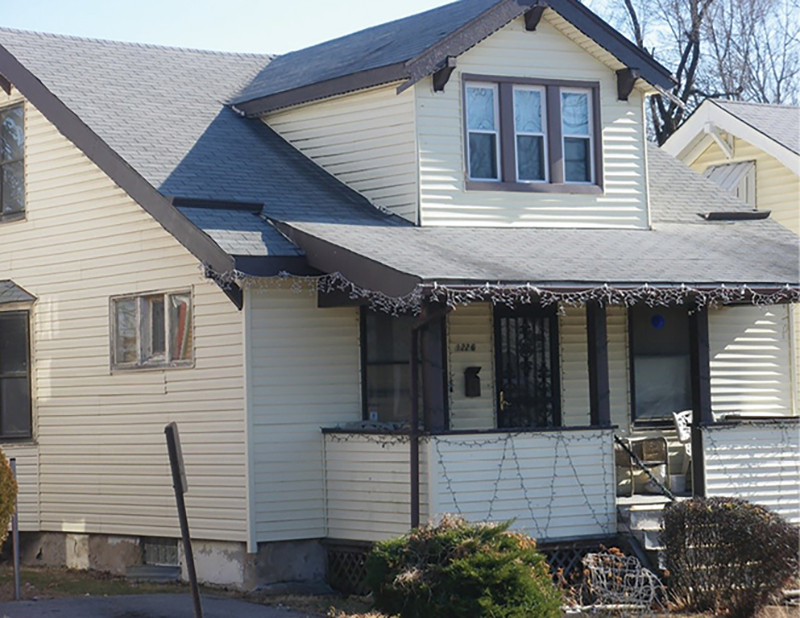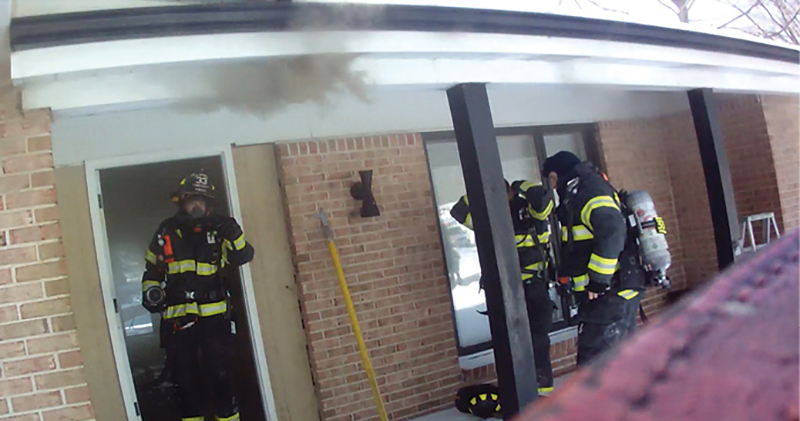It is often easy for firefighters lose sight of the necessary functions that are required to facilitate the coordinated fire attack, specifically the associated truck functions. This is especially true if your agency does not have dedicated truck/ladder companies or has limited access to truck companies.
Truck company operations include a variety of essential fireground functions. A common misconception about the job of the truck company on a structure fire is that the primary or only duty is ventilation. Truck work, however, is much more than ventilation. Functions that are categorized as truck company operations, traditionally performed by ladder companies, must be accounted for and prioritized on every fireground. One such major function is search.
RELATED FIREFIGHTER TRAINING
- Primary Search: Accomplish the Mission
- The Long and Short of It: Maximizing Primary Search on the Suburban Fireground
- Search and Rescue by the Numbers
Typically, truck company functions can be categorized as any type of operation on the fireground that does not involve the activity of flowing or deploying water during the fire attack. These functions can be summed up by the traditional acronym “LOVERS U”:
- Ladders.
- Overhaul/Salvage.
- Ventilation.
- Entry.
- Rescue.
- Search.
- Utilities.
The Search Function
One function that is often misunderstood or taken for granted is the action of search. Most fire department members understand the importance of searching for victims. They understand that the most important objective of the fireground is to save lives and to remove victims from lethal atmospheres in a timely, hasty manner. We should never diminish the top priority of life safety; however, search is not limited to victims in relation to truck company operations and the coordination of fire attack. Search also relates to locating and accessing the main body of fire as well as any extension into walls, voids, or ceiling and attic spaces.
Failure can occur on the fireground if fire is not accessed in a timely manner. Fire location can sometimes prove to be a challenge. Fire doesn’t always present itself and isn’t always easily accessible. Accurate fire location must be determined before we can commit to the strategy of extinguishment.

(1) Interior fire attack requires coordination. Fire floor truck company operations, such as accessing fire in voids, are essential for successful fire control and extinguishment. (Photos courtesy of author unless otherwise noted.)
Tactics and Strategies
Achieving the tactical objective of saving life and property requires strategy. As stated previously, there is a strategy to structural firefighting. Structural firefighting requires a methodology of strategic implementation:
- Locate the main body of fire.
- Contain the fire to the main “container,” compartment, or structure.
- Confine the fire further to the main area of origin.
- Extinguish the main body of fire and remove all possible extension.
Note that rescue takes precedence over any strategical implementation. However, it is an action of opportunity, because firefighters may capitalize on imminent rescue opportunities or create the rescue opportunity by initiating the attack.
The strategies and tactics of structural firefighting are not simply “putting the wet stuff on the red stuff.” Yes, it is accurate to say that placing water on the fire quickly removes the challenge being faced and achieves our objective. However, actions must occur to facilitate this achievement.

(2) Fire located in an attic space. Attic fires must be accessed quickly because of the lightweight truss construction and large amounts of unprotected lumber.

(3) Exterior picture of a 1½-story residential building (side A).

(4) Interior sketch of a 1½-story residential building (side C). The sketch displays the void spaces associated with the construction type. The voids pose a major hazard to firefighters if concealed fire is not found during interior operations. (Sketch courtesy of Erin McGruder.)
If fire is not correctly located, two negative impacts could occur:
- Commitment of resources to the wrong location, losing valuable time toward fire attack.
- Passing fire, trapping firefighters.
In both situations, catastrophe could be imminent. Delaying fire attack could result in the loss of a structure and, in worst-case scenarios, the death of trapped fire victims. This is especially true in newer residential construction that poses the challenges of higher heat of release rates of furnishings and earlier collapse potentials because of engineered structural members.
Consider fires in attic spaces as a classic illustration of the necessity of not only locating the main body of fire but also accessing the compartment of the fire rapidly. We not only have to predict the location of the fire through the size-up function but also must access the fire by penetrating the ceiling material with the proper tools to place the attack line in service. Because of lightweight truss construction and the large amount of unprotected lumber within the space, there is a short amount of time available to gain control of the main body of fire, containing and controlling it to the area of origin. Skipping the strategy of fire location or not having the ability to quickly access the compartment will lead to failure of achieving the tactical objectives.

(5) Reading smoke from the exterior will give a hint to the location of the fire within the structure; however, the exact location and access to the fire must occur from the interior.
In addition, passing fire during fire attack could be disastrous for interior crews. Crews could become trapped if voids that are consumed with fire involvement suddenly burn through or create a rapid fire event in between the crew and the egress point.
This has unfortunately occurred numerous times in fires in 1½- or 2½-story structures, also commonly referred to as Cape Cod structures. Firefighters have been trapped on upper floors by fire extension that wasn’t located in the void spaces of the half story. Firefighters make progress to the upper floor and then are unexpectedly cut off because the fire suddenly presents from the void, creating a rapid fire event between the crew and the egress.
Implementing Search
The complete search function must be implemented and assigned at every structure fire. Search and fire location are high priorities among the initial actions that must occur on the fireground because of the impact of the action on the facilitation of the coordinated fire attack. It is commonly assigned to the first-arriving ladder or truck company and is subsequent to the functions of size-up and forcible entry or initial access to the structure.
It cannot be overstated that size-up is the most critical initial function that must occur before any other action can be initiated. There are many circumstances that must be observed prior to tactical commitment of resources, mainly the initial attack line. Fire doesn’t always present itself on our arrival at the fireground. The first-arriving company officer must exit the apparatus and attempt to get the full picture of the structure, conducting a 360° size-up. Even then, the officer might not have the full view of the fire or indication of where the fire or victims are located. Locating the fire within the compartment of the structure will require reading the major attributes of the smoke. Remember the saying, “Smoke is now, fire is later.”
Major attributes of reading smoke are as follows:
- Color.
- Density.
- Velocity.
- Volume.
Predicting the location of the fire within the structure from the exterior is only half the battle and may not be the complete solution to locating the seat of the fire. The search for the fire may have to take place from the interior. Locating also includes accessing. The seat of the fire, or extension, may be hidden in a structural member or void space that will require access with a hand tool. Companies must be assigned to complement attack crews and work in unison to facilitate the attack, locating and accessing the fire and possible trapped victims.
Companies must not only be dedicated to the action of search and facilitating the fire attack, but they must also be prepared. They must be trained and versed in truck company skills. They must also be assigned the adequate tools for the function or assignment. At a bare minimum, the crews must be prepared to force entry and be able to access voids or the specific structural materials, such as gypsum board or lath and plaster. These crews should be detailed with at least a set of irons (halligan bar and striking tool), the appropriate pushing/pulling tool (an adequate hook), and a pressurized water extinguisher. This, of course, is in addition to any personal protective equipment, radios, or portable hand lights.
Accounting for the Search Function
The complete search is a high-priority action and must be consistently implemented by being initially assigned or specifically detailed in your agency’s standard operating guidelines (SOGs) for structure fires. In a “positional system,” in which the apparatus type dictates the crew’s functionality on the fireground, initial-arriving ladder or truck companies should be assigned search in their list of tactical duties. However, in a “functional system” or a system that lacks ladder/truck companies, it can become more complicated. If there is no game plan or an effective SOG for an agency that operates a “functional system,” the complete search can be missed or conducted ineffectively.
Ladder or truck companies should always be engaged in the search or the hunt. It is ingrained in their being or existence on the fireground. But, how can this translate into a “functional system” that lacks dedicated truck companies?
There must be a game plan in a “functional system” that prioritizes the coordinated actions on the fireground for strategic and tactical achievement. Therefore, engines and quint fire apparatus must commit to functions that are normally assigned to ladder companies, deviating from their routine engine tasks. This often requires the second- or third-arriving apparatus to be assigned initial functions that would normally be assigned to the first-arriving, dedicated truck company. This is dependent on the individual agency’s circumstances, primarily the availability of resources and staffing.
A positional system is a systematic approach that relies on apparatus type for functional crew assignment. For example, ladder companies are primarily assigned all functions associated with truck company operations or any actions that facilitate fire attack. Engine companies are assigned all functions that primarily entail the deployment or the flowing of water.
A functional system is a systematic approach that relies on prioritization of functions for fireground assignment with the intent of achieving the coordinated fire attack with safe, effective, and efficient parameters. This system is in opposition to a positional system that relies on apparatus type for functional crew assignment.
Final Takeaways
- Do not take for granted that the initial size-up satisfies the need for fire location. Not all fires are visible from the exterior or easily accessible.
- Commit to the complete search and understand the strategies of locate, contain, confine, and extinguish. Do place an emphasis on rescue and make the opportunities for rescue; however, also realize that the search is not only for victims but also for fire.
- Have a game plan that includes search as a priority and that assigns it early in the order of operations. Develop an SOG that is specific to your agency’s circumstances and capabilities.
- Assign the proper tools for the job; be prepared; and train, train, train!
Jim Silvernail, a 25-year veteran of the fire service, is chief of the Kirkwood (MO) Fire Department. He has a master of arts degree in human resources management and a bachelor of arts degree in business administration and is an executive fire officer. He is author of the book Suburban Fire Tactics (Fire Engineering, 2013).
Jim Silvernail will teach “Suburban Fire Tactics” on Monday, April 25, 1:30 p.m.-5:30 p.m., at FDIC International 2022 in Indianapolis.

